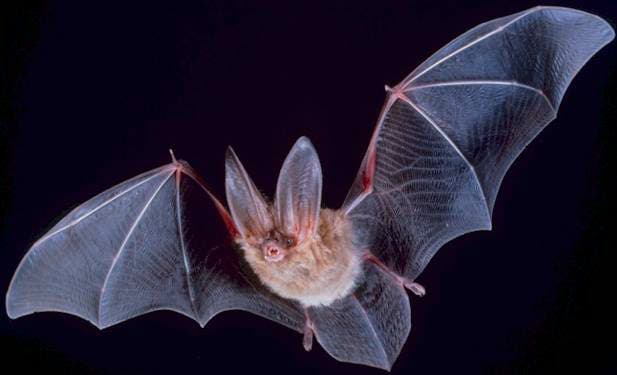
Bats are mammals that have forelimbs adapted as wings; as such, they are the only mammals that are naturally capable of sustained flight. Bats are often associated with horror stories, vampires and haunted houses. For the most part, these creatures are misunderstood.
Other than being the only mammal that can fly, bats are the perfect hosts for a lot of disease-causing viruses. Bats have been known to carry rabies, Hendra and Marburg viruses, and research has also suggested that bats may be the original hosts of Ebola and Nipah.
The Marburg virus and some strains of the Ebola virus can kill up to 90% of humans infected. India’s Kerala state has just faced an outbreak of the Nipah virus and seventeen people have died so far.
This may seem like a small number, but only one of the eighteen people infected survived. For a number of these viruses hosted by bats, there is no known cure or vaccine, which means that doctors can only offer supportive treatment while the patient’s immune system fights off the virus.
When it comes to carrying viruses that can be transferred to other species including humans (so-called “zoonotic” viruses), bats are in a league of their own. These flying mammals host over 60 zoonotic viruses. This is rivaled only by rodents that carry a wide range of bacteria, viruses, protozoa, and helminths (worms).
Researchers compiled and analyzed databases of every virus identified in bats and rodents. They found that rodents host 179 viruses, 68 of which are zoonotic, while bats carry 61 zoonotic viruses, with 137 viruses in total.
So, rodents win by a slight margin in carrying more human-infecting viruses, but bats host more zoonotic viruses per species — on average, each species of bat hosts 1.8 zoonotic viruses, while rodents host 1.48 viruses per species.
Humans have started creeping into areas where bats naturally live, especially in the tropics, which has led to an increased risk of contact with these animals. In Malaysia, for instance, commercial pig farms were installed in bat-inhabited forests which consequently led to the first human outbreak of Nipah, via pigs. As people continue to move into jungles on the planet, they will see more and more outbreaks of zoonotic viruses.
Bats also carry more human pathogens than other animals. Why? Because bats prefer to live close to one another (like humans spreading respiratory viruses like the flu during winter), giving plenty of opportunities for pathogens to spread between the bats.
But why aren’t these lethal viruses deadly for the bats? Scientists theorize that it has something to do with their ability to fly. It takes a lot of energy to fly and when a lot of energy is being utilized, a lot of waste is produced. To prevent this from damaging the DNA of bats, they have over time evolved a sophisticated defense mechanism that also helps prevent them from succumbing to disease.
But what is this mechanism that prevents bats from getting sick from the unusually high microbial loads in their bodies? The question has finally been answered by Peng Zhou and colleagues in a paper published in the journal Cell Host & Microbe.
Zhou and scientists at the Wuhan Institute of Virology in China found that in bats, an antiviral immune pathway called the STING-interferon pathway is dampened, and bats can maintain just enough defenses against illness without triggering the immune systems from going into overdrive.
In humans and other mammals, an immune-based over-response to one of these and other pathogenic viruses can trigger severe illness. For example, in humans, an activated STING pathway is linked with severe autoimmune diseases.
Researchers at the University College Dublin have also shown that bat macrophages can rapidly mount a robust antiviral response whenever a pathogen is detected, but compared to the immune response of a mouse, the bat immune system can quickly reverse their response by releasing anti-inflammatory cytokines.
Other researchers have suggested that bats’ super-tolerance might have something to do with their ability to generate large repertoires of naïve antibodies, or the fact that when bats fly, their internal temperatures are increased to around 40oC (104oF), which is not ideal for many viruses.
Only the viruses that have evolved tolerance mechanisms survive in bats. These hardy viruses can therefore tolerate human fever. What is a good thing for bats is a bad thing for humans.
So, what can we do to prevent future outbreaks of bat viruses? We certainly cannot create vaccines and drugs for all these emerging pathogens.
However, there is a need to study the interactions between bats, humans and domestic animals and identify factors that are making bats come into contact with humans and domestic animals, and try to do something about it.






